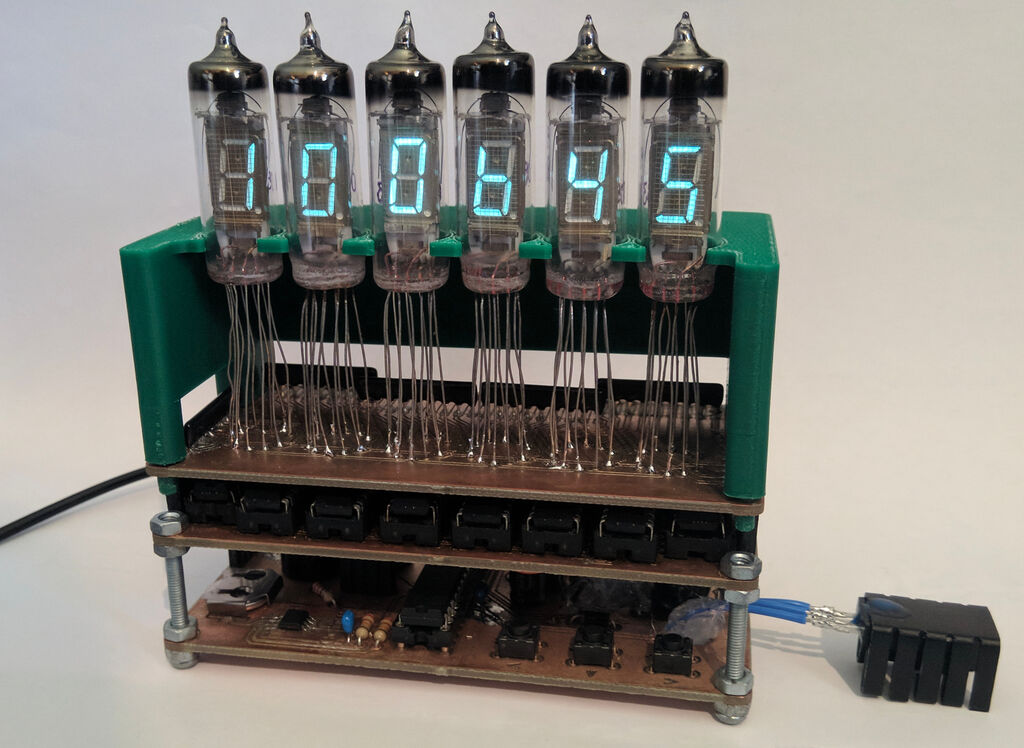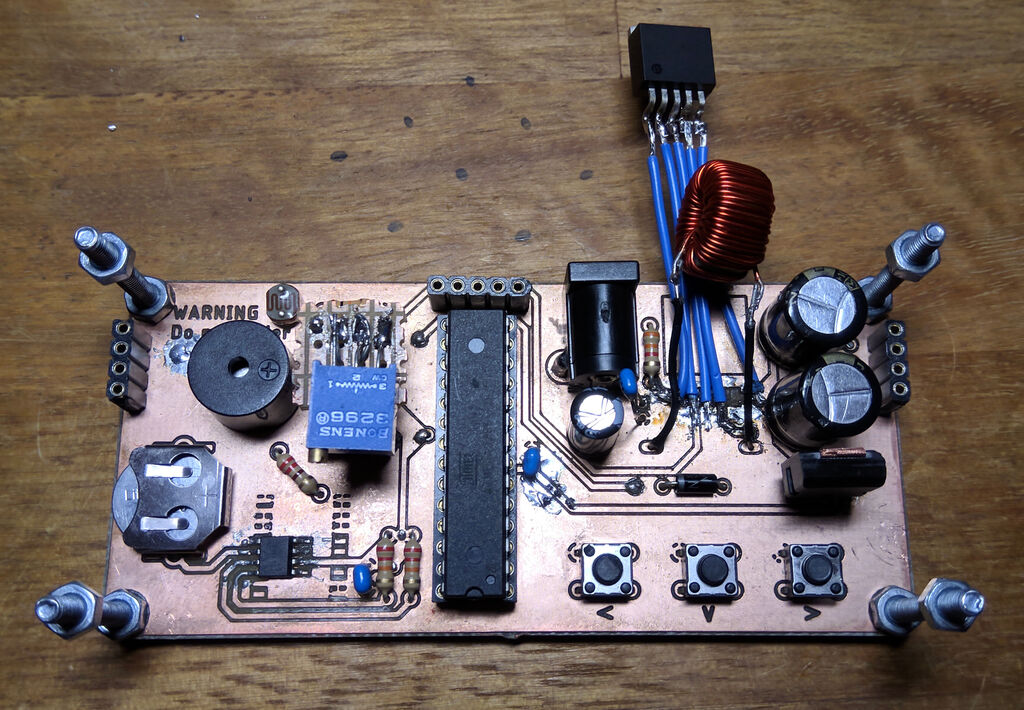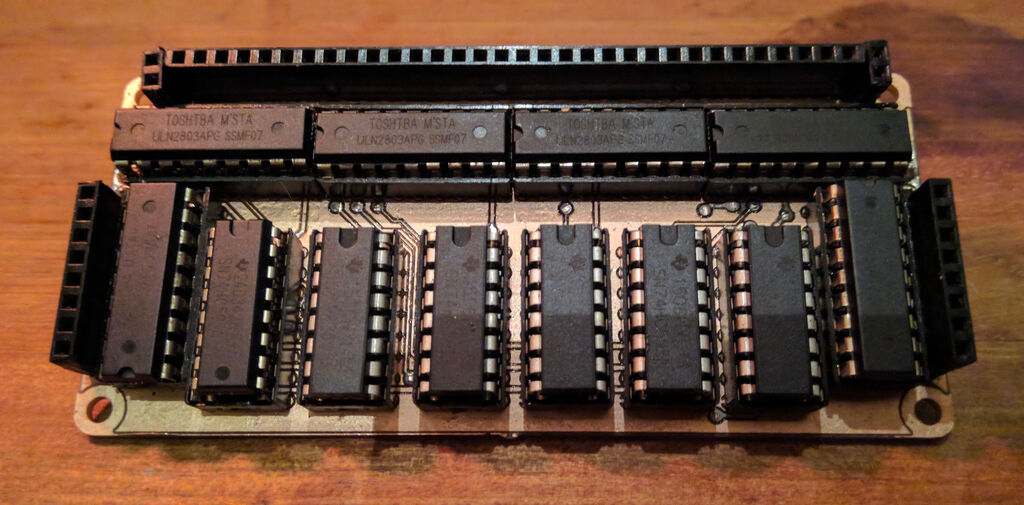IV-6-Clock
Another late night browsing eBay resulted in me buying 6 ИB-6 VFD tubes from Ukraine. I had recently discovered Nixie-clocks and was therefore looking for something similar that I could actually afford. ИB-6 tubes appear to have been mass produced in the soviet union and are still broadly available online. With a bit of luck they’re possible to find at 10 dkk (~2 $) / piece. Not too bad.
When a package arrived about a week later I realized the far from insignificant scope of the project, and it went on the shelf for a while. I later ended up making this my ‘Teknikfag A’ exam project, which meant ~100 scheduled hours and access to a PCB CNC cutter. The result was a mostly functional alarm clock with quite an aesthetic:

In brief, the watch is controlled by an ATmega328P with an external DS3232 RTC for handling time. To drive the VFDS, a high voltage and low voltage line is required. To light a segment, it must be supplied the high voltage. This complicates things, as normal TTL logic can’t be used alone. The displays in total 48 segments are pulled up by resistor arrays, switched to low by darlington arrays that in turn are controlled at 5v by shift registers.


A video demonstration:
There are currently a few major issues with the clock: The alarm is far too quiet. A possible solution to this could be to power it from the hv line, possibly through a voltage regulator. The 2.5V line is currently created through a linear voltage regulator. The current through the filaments is quite high, which of course means the power dissipation of the regulator is high enough to require a heat sink. It would be necessary to replace this with a better solution, probably a step-down converter circuit. If I find the time to fix these issues, i am considering getting some proper circuits produced and selling off kits or complete watches.
As a part of the exam project i had to write a report, which I’ve uploaded here. It’s in Danish btw.